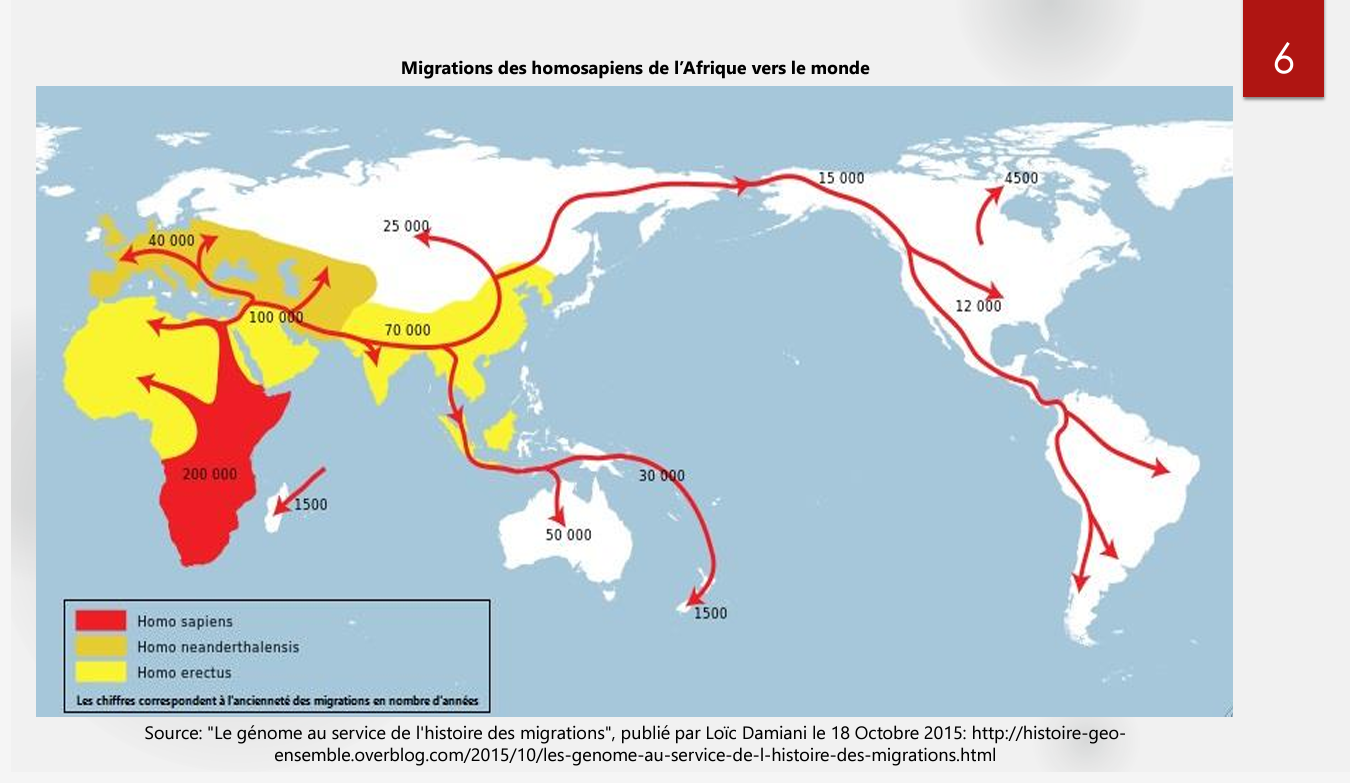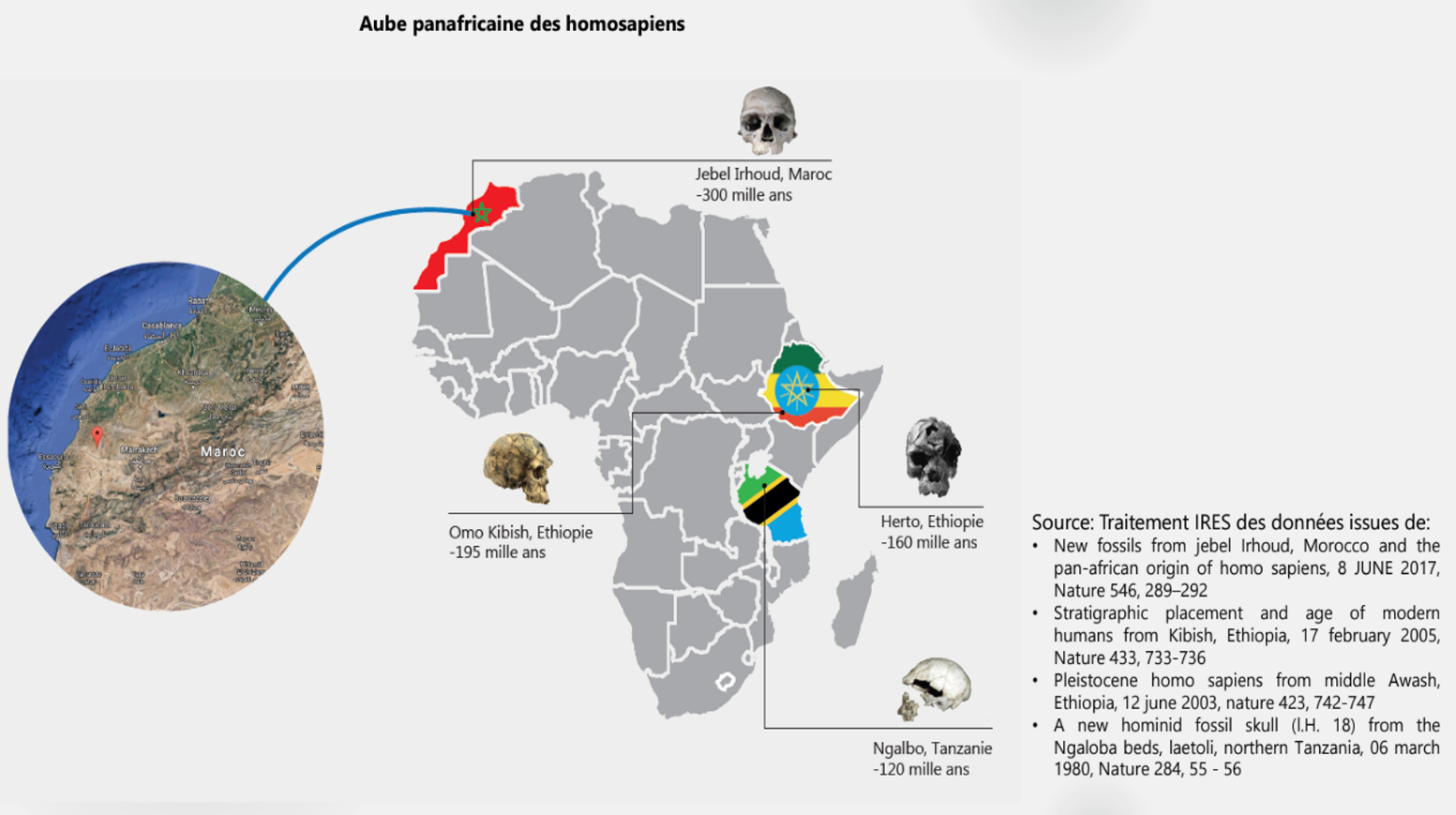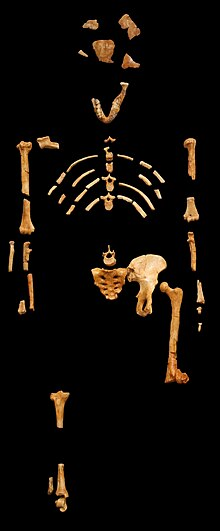Africa is considered the cradle of humanity, where the human lineage appeared, and where the only surviving species today is the modern human, Homo sapiens. During the 20th century, paleoanthropologists discovered a large number of fossils and evidence of occupation by hominid precursors of humans, dated by radiometric dating to: 7 million years before present for the species Sahelanthropus tchadensis (Toumaï fossil), 6 million years for Orrorin tugenensis, 4 million years for the Ardi fossil of the species Ardipithecus ramidus, 3.9 to 3.0 million years for Australopithecus afarensis, 2.3 to 1.4 million years before present for Paranthropus boisei, and approximately 1.9 million to 600,000 years before present for Homo ergaster.
After the evolution of Homo sapiens, about 200 to 100,000 years ago, the continent was mainly populated by hunter-gatherer groups. According to the “Out of Africa” theory, these first modern humans left Africa and populated the rest of the world between 80 and 50,000 years ago. They would have left the continent by crossing the Red Sea via the Bab-el-Mandeb, the Strait of Gibraltar, and the Isthmus of Suez. Other migrations of these modern humans, within the continent, date from the same periods, with traces of early human settlement in southern Africa, North Africa, and the Sahara.
Lucy, skeleton of Australopithecus afarensis
Discovered on November 24, 1974 in the Awash Valley, Afar Depression, Ethiopia.
For more information :
- https://fr.wikipedia.org/wiki/Portail:Afrique
- https://en.wikipedia.org/wiki/Africa
- https://africacenter.org/
- https://journals.openedition.org/etudesafricaines/
- https://etudes-africaines.cnrs.fr/
- https://journals.openedition.org/etudesafricaines/
- https://www.afdb.org/fr/documents-publications/economic-perspectives-en-afrique-2024



